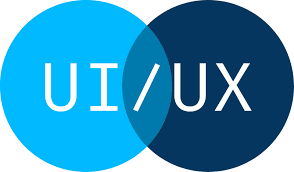Difference Between UI and UX

Difference Between UI and UX

Inside or outside of the industry, you hear UX (user experience) and UI (user interface) so often. User-Interface (UI) deals with the design aspect of an application( web or mobile), is an access point that as a user you can interact with designs. GUIs and VCIs involving 3D, oral auditory interaction are a few designing interfaces you come across. In short, UI covers the entire surface part of the product. On the other hand, User Experience (UX) covers the entire spectrum of the company and its products and services that as a user you do interact with.
UX applies to just anything that can be experienced! It can be a website, can be a coffee machine, a mobile application, e-commerce platforms, etc. The motto behind a perfect UI and UX design are to give a seamless experience as a user. What is your experience when you open a Facebook account or Gmail or Amazon shopping? You are interacting with the UI of the websites(web or mobile) and the experience that you feel is possible due to their UX part.
Let’s see how they are different from each other-
1. Interaction as Application
User Interface (UI)acts as a fundamental element of interactions between humans and machines, computers, or mobiles. It focuses on the outward appearance, looks, layout of a screen on the web or mobile applications. It’s the interaction between users and visual elements of a product such as buttons, text, images, placeholders, checkboxes, and so on.
UI gives you the look and feels of the product design. Whereas, User Experience (UX)facilitates interactions with a company product rather than an interface. It determines the ways an interface works and how people are interacting with it and is concerned with the conceptual aspects of the product or application.
2. Core Functionalities
User-Interface (UI) focuses on the appearance of the product, responsible for simulating what UX designers have developed or engineered in the background. Functional-requirements basis, UI designers create the product’s interface using all the aesthetics and design theories to create an appealing onscreen appearance. Whereas, User Experience(UX) focuses on the underlying functional aspects that enable these products or applications to run and serve the purpose.
For instance, you are looking for an e-wallet to be installed on your mobile. you will vouch for the one that will give you 100% satisfaction while consuming its service. Thus, UX determines the usage value of the product. Just by seeing the screen won’t serve your purpose but the real conduct that matters! That is UX.
3. Tangibility
User Interface(UI) focuses on the tangible elements like the outward appearance of the product, i.e. its ‘look’ on the surface part. Whereas User Experience (UX), focuses on the ultimate experience, the intangible satisfaction quotient you get out of that product. Just imagine you are in a restaurant, and, the elements you handle there will be plates, spoons, glasses, table, chair, napkins, which are just the appearance(connect this situation to UI experience).
On the other hand, the food you get, explains your ultimate journey as a customer, and the experience you get is the quality of the FOOD you had ordered ((UX role in the context)- whether it was good, medium, or bad. This situation gives you an idea of the difference between UI and UX.
4. Enabling Artificial Intelligence
AI-enabled User Interface (UI) is adopting AI-principles while designing the interface of a product (mobile or web) or application. It is about integrating AI into the on-boarding process of designing facilitating the environment for ‘natural input’ and ‘humor’ within UI, just like ‘SIRI’ or ‘ALEXA’.On the other hand, UX uses AI-Algorithms, the intelligent algorithms that facilitate smart processing of data and give valuable insights for future optimization. Crucial UX metrics are efficiently handled by AI-powered quantitative testing methods.
5. Usage Platform
User Interface (UI) means GUI. GUI gives you a visual-interface and as a user, you are interacting with any digital product like websites, social media platforms,eCommerce, etc. Some of the applications of GUI are mobile devices, apps, Virtual Reality (VR) headsets, car HMIs, all do have a GUI interface. Whereas, User Experience(UX) involves analyzing data and insights, proposing, and developing designed solutions. Then they create wireframes and give them to the UI team or design team. Then finally they take charge of the development and execution parts of the process. The popular front-end web development languages & tools are HTML, JAVASCRIPT, CSS, while modern application programming languages such as JAVA, PHP, Dotnet, etc.
So, UI and UX are interconnected still different!
A product needs both – UI and UX to turn into reality. Both the aspects go hand in hand however with a difference. User Interface(UI) deals with the overall look or appearance of a product while User Experience (UX) deals with the actual feel and experience of the product. You deal with multiple mobile and web applications for your day to day business needs or personal fulfillment. Don’t you go by looks as well as the inherent benefits that your apps give to you?
Difference Between UI and UX | Difference Between UI and UX | Difference Between UI and UX
Click here to apply jobs worldwide

Leave a Reply